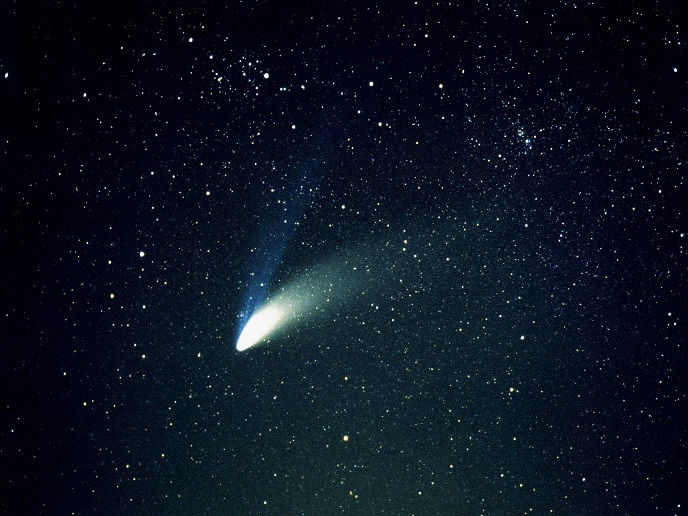Is there a limit to how big a comet can be?
Before we can talk about how big a comet can be, we first need to understand what a comet is – and isn’t. So what separates a comet, an asteroid and a meteor? “In astronomy, a comet is defined as an object that produces dust and/or gas,” says Sicardy(opens in new window), an astronomer at Sorbonne University(opens in new window). According to Sicardy, who co-discovered the rings around Neptune (one of his many groundbreaking celestial discoveries), this means that what was a rocky asteroid yesterday could be reclassified as a comet today. “As soon as that asteroid starts losing any of the dust or gas it produces, it qualifies as a comet,” he explains. What a comet isn’t, however, is a meteor. “What we typically refer to as shooting stars are very small space debris, even as small as a grain of sand,” remarks Sicardy. “Because this debris is evaporating, it becomes luminous, which is what we see.” While shooting stars aren’t comets, that doesn’t mean they aren’t related. “It is estimated that half of all shooting stars are dust from comets, while the other half come from the dust emitted when asteroids collide,” notes Sicardy.
Exceptions to the rule
As to the question of how big a comet can be, Sicardy says the answer goes back to what makes a comet a comet. “Most comets are small, measuring anywhere from a few kilometres to 10 kilometres across,” he says. But there are exceptions. For example, the Bernardinelli-Bernstein comet, which is scheduled to pass through our sky early next decade, measures nearly 140 kilometres across, making it one of the largest comets discovered in modern times. Then there’s the case of Chiron, an object that orbits between Saturn and Uranus, that measures 250 kilometres across. While classified as an asteroid when it was first discovered, at some point it began producing dust, thus becoming a comet. “Chiron is unique in that it has a detectable coma [an envelope of gas], meaning it is a comet, but it is over 50 000 times the typical volume of a comet,” adds Sicardy.
Too big to be a comet
In general, Sicardy says the bigger the comet, the more dust and gas it emits, resulting in those trademark tails we see in the night sky. But there is an upper limit. “If the body is too big, gravity will prevent it from losing material,” he says. “If it doesn’t lose its gas and dust, by definition, it cannot be called a comet.” Take Triton, the largest of Neptune’s 14 known moons, as an example of when a body becomes too big to be a comet. “Triton has geysers, meaning it’s emitting gas and dust,” explains Sicardy. “But because of its size, roughly that of Pluto, its gravitational pull is strong enough to cause this material to fall back to the surface – thus, not a comet.” Just don’t ask whether being the size of Pluto is enough to be called a planet. Click here to find out more about Sicardy’s research: Stellar objects beyond Neptune offer clues about our origin



